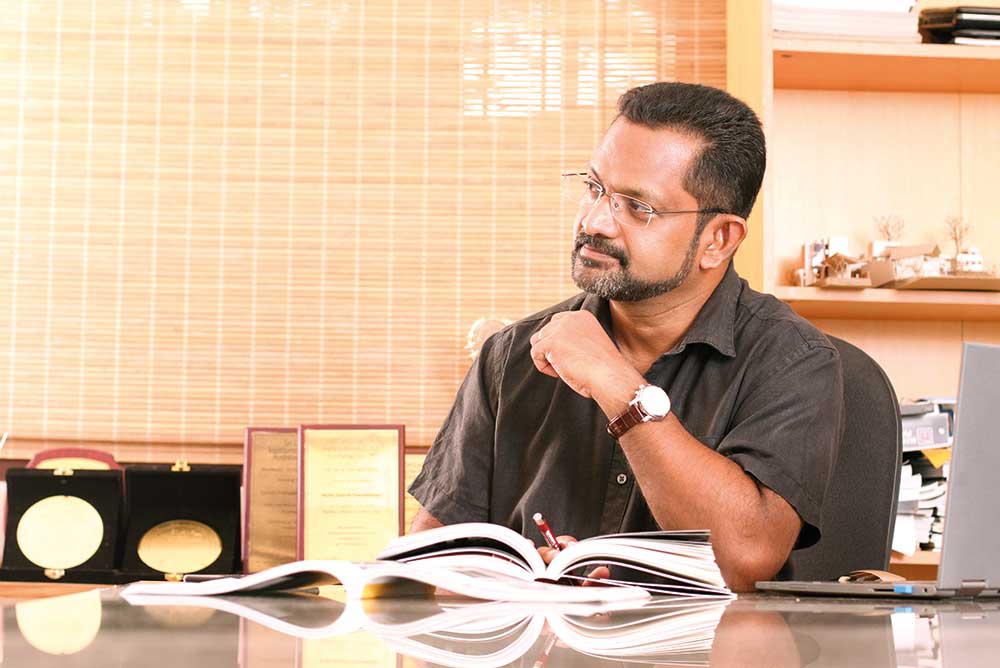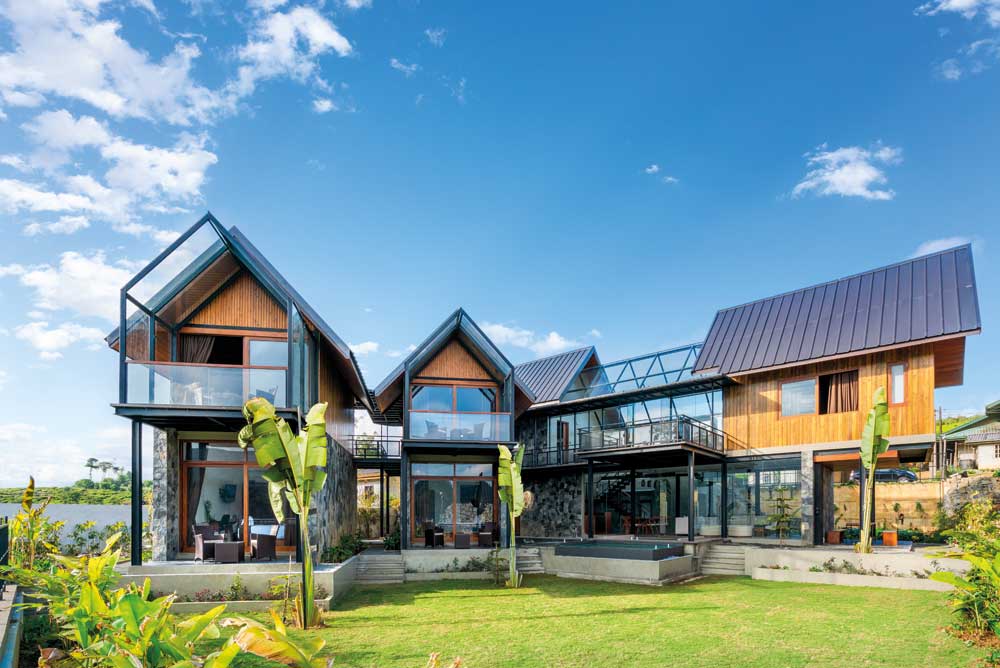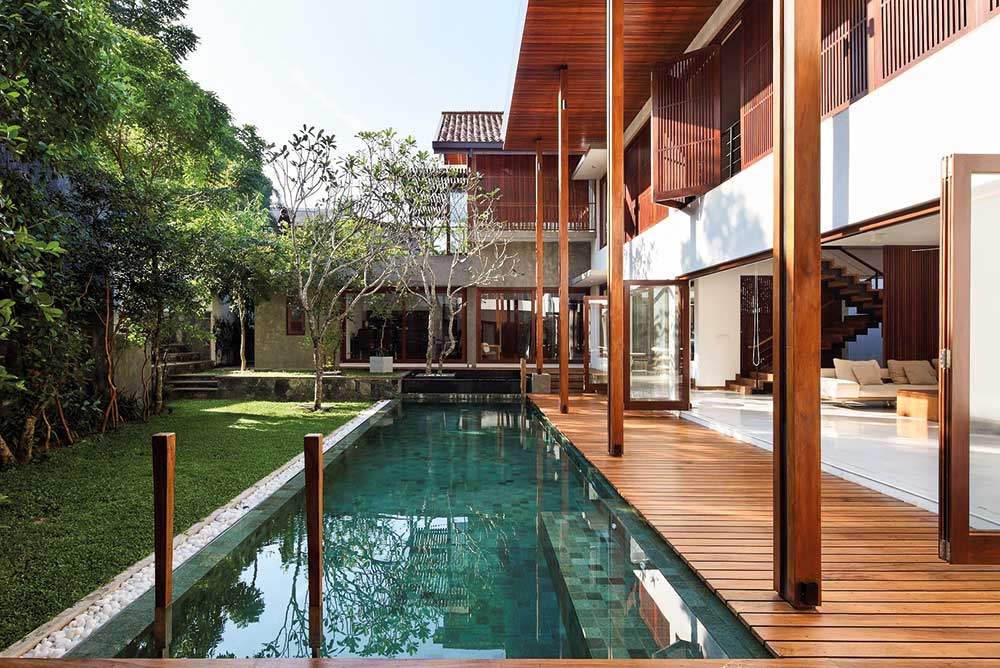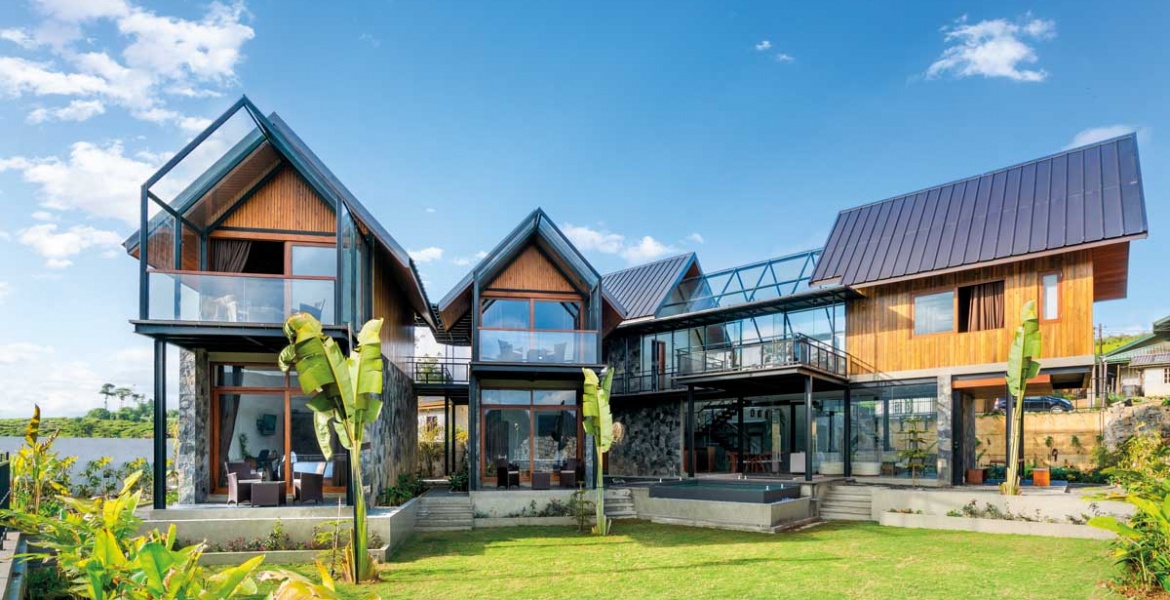Inspiring connections
Promoting the nexus between design and nature
Damith Premathilake in conversation with Nicola Jayasundera

Anature enthusiast since childhood, Damith Premathilake also excelled in art competitions at school. Despite starting with biology, he stumbled upon architecture – and then realised that it merged nature, art and science.
His most cherished career achievement to date was receiving an Architecture Asia Award for Emerging Architects (AAEA) in 2014, which validated years of hard work and dedication, and served as a beacon of recognition that helped him push his creative boundaries.
Premathilake’s primary aim is to evoke through his work a sense of inspiration and connection in people as regards the built environment. He aspires to promote sustainability and demonstrate how architecture can coexist with nature.
Ultimately, he hopes to spark a deeper appreciation for the built environment in cohesion with nature and its impact on our lives.


Q: Using natural and sustainable materials is one of the strongholds of modern architecture… What is your view on this?
A: The use of natural and sustainable materials in modern architecture is not simply a trend; it’s a fundamental shift towards a more responsible and harmonious approach to design.
It is a view that aligns with the ethos of environmental conservation, reducing the carbon footprint and fostering a healthier built environment.
Natural materials such as wood, stone and earth not only offer aesthetic beauty but also demonstrate a commitment to preserving our planet’s resources. In this context, sustainability encompasses energy efficiency, minimal waste and adaptability for the long term.
It’s an essential step in mitigating the impact of climate change, and creating a more resilient, eco-friendly and aesthetically pleasing urban landscape.




Q: What are the current design ideologies that will drive the future of architecture?
A: The future of architecture and design is shaped by several prominent ideologies. Locally and internationally, sustainability remains a central focus – with an emphasis on green building practices, renewable energy integration and low impact materials.
‘Biophilic’ design, which incorporates nature and natural elements, is gaining traction and enhancing the overall wellbeing of the urban fabric. Moreover, the COVID-19 pandemic accelerated the adoption of flexible and adaptable spaces for remote work, and healthcare design innovations.
These ideologies collectively shape a future where architecture and design prioritise the environment, people and technological advancement.
Q: How can the long-term efficiency of modern eco-buildings be achieved?
A: This can be achieved through a combination of design, technology and management strategies. Building materials should prioritise sustainability by using recycled or renewable resources to reduce the environmental impact.
Energy efficient systems such as solar panels and insulation should be integrated to minimise long-term energy consumption. Cost-efficiency can be sought through life cycle analysis, and considering initial investments and long-term operational costs. Regular maintenance and monitoring, along with smart building technologies, can optimise performance over time.
Additionally, promoting sustainable practices such as water and energy conservation among occupants contributes to a building’s long-term eco-efficiency.



Q: And how can environmentally appropriate design solutions be promoted?
A: There should be clear regulations and incentives to encourage sustainable practices for green building designs. Education and awareness campaigns can inform architects, builders and the general public about the benefits of environmentally-friendly designs.
In addition, collaboration among architects, engineers and environmental experts can foster innovation and best practices.
Certification systems such as Leadership in Energy and Environmental Design (LEED) and Building Research Establishment Environmental Assessment Method (BREEAM) can help benchmark and reward environmentally sound designs.
Finally, showcasing successful projects as case studies will inspire others to adopt similar practices. This will promote a broader shift toward environmentally appropriate design solutions.


